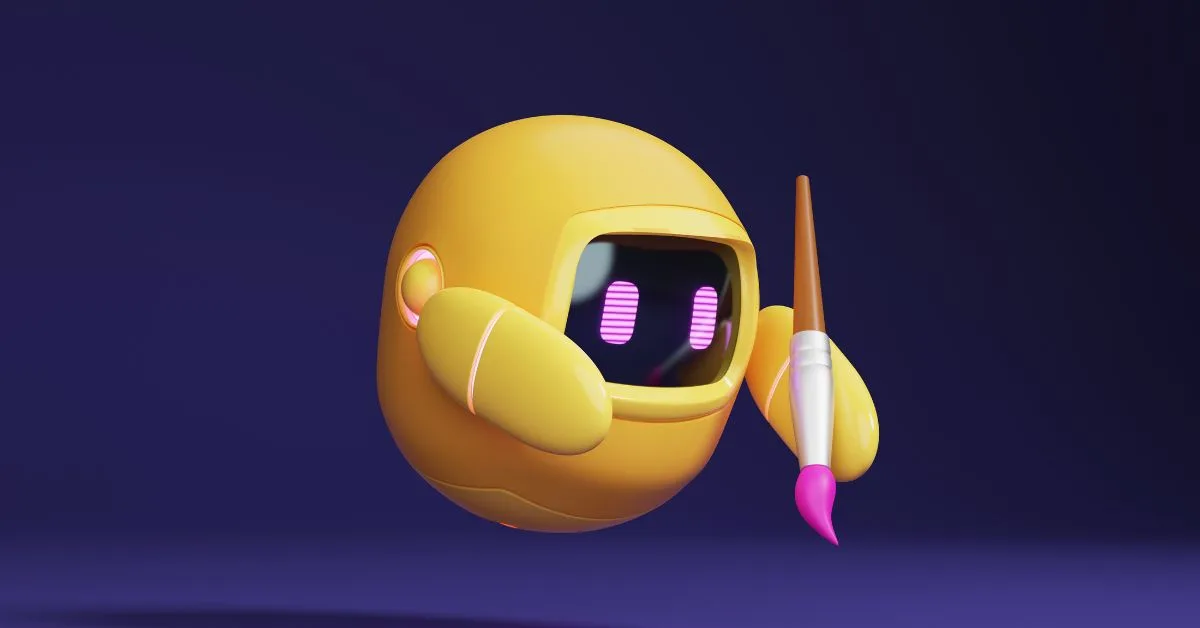Artificial Intelligence (AI) has been making major advancements across industries, from optimizing supply chains to powering autonomous vehicles. Now with AI art generators, creative domains face technology-triggered transformation too.
Tools like DALL-E 3, Midjourney and Stable Diffusion enable users to craft impressive visual artworks simply through text prompts and intuitive interfaces.
But how exactly do these AI systems manifest such artistic prowess programmatically?
In this guide, we’ll cover key concepts around working mechanics empowering algorithms to generate novel images and illustrations upon text descriptions automatically.
Why Explore AI Art Generative Systems
Before diving into the technical details, it’s worthwhile highlighting why decoding how AI art gets created algorithmically matters beyond sheer curiosity:
- Demystifies Magic: Peeking under the hood dispels notions of sentient creativity.
- Encourages Responsibility: Understanding limitations and biases encourages accountable usage.
- Fuels Innovation: Seeing capabilities inspires new applications and features.
- Sparks Control: Enables deliberately guiding outputs by leveraging knowledge around model behaviors.
How Does AI Art Work – Core Concepts
With motives established, let’s see how AI art generators operate under the surface!
1. Neural Networks
The base technology driving AI artworks is neural networks – computing systems modeled after the biological brain containing interconnected nodes called artificial neurons. These build conceptual linkages between provided inputs and target outputs.
For art generators, inputs comprise textual prompt strings, and target outputs are creative images manifesting described objects, styles and themes.
By recognizing patterns within massive visual datasets through such neural connections, models determine appropriate pixels to generate requested scenes.
So AI art begins by mimicking how actual brains link concepts to visual memory!
2. Deep Learning
Neural networks underpinning AI art utilize deep learning algorithms which contain multiple layers of abstraction between input and output data.
Each internal layer learns hierarchical representations of provided training inputs. Being “deep” learning models with many layered connections, this enables nuanced high-level understanding of highly variable visual datasets.
So deep learning forms the key machinery powering AI art generators to interpret free-form text prompts for scene construction.
3. Generative Adversarial Networks
A common architectural approach adopted is Generative Adversarial Networks (GANs) – systems with two dueling neural networks.
One generator network creates images matching input text descriptions. The second discriminator network tries to detect artifacts revealing whether images are real or artificially produced. These adversarially competing networks refine each other’s capabilities through repetitive simulations.
Over multiple generations, generator networks become highly proficient at producing realistic renderings fooling discriminator networks continually. Thereby excelling in fabricating creative artworks matching desired text prompts!
Training Process
For manifesting such artistic prowess, deep neural GAN models need to be fed enormous volumes of text and image data for finding linkages between languages and visual constructs.
Typical training corpus scale reaches hundreds of millions of text-image pairs! This allows deeply layered models to form strong connections between words, phrases and pixel outputs.
Training itself involves an intensive computational process spanning multiple days on high-powered hardware setups like hundreds of tightly coupled GPU units.
Only through such expansive and rigorous foundation training do AI art generator systems build capacity to later convert newly submitted text prompts into fitting photographic illustrations on demand.
Run-Time Execution
With training completed, models can now accept text prompts at run-time and produce tailored images within seconds by leveraging accrued knowledge foundations identifying correlations between words and pictures.
When users type a descriptive phrase, algorithms map embedded word vectors and sentence compositions onto associated visual memory concepts learner earlier while optimizing GAN image outputs.
Additional tuning parameters allow tweaking aspects like image dimensions and artistic styles giving users more control over final renderings. Thereby evaporating creative friction!
Advancing Capabilities
As research in AI artgenerations progresses rapidly, enhancements equip newer models with additional skills:
👁 Visual consistency between outputs of same prompt
✏️ Offering drawn illustrations besides photographs
🖌️ Manifesting different painting styles like oil or watercolor
🎞️ Producing continuing animations and video clips
Such ever-expanding features dramatically widen creative horizons possible!
And thanks to computational prowess required, running costs drop as hardware architectures optimize further – allowing democratized access to blossoming AI-powered art tools.
Limitations and Challenges
However, AI art generators currently face constraints around originality, ethics and benchmarking:
🤔 Outputs risk repetition as models replicate prior exposures
🌇 Representation gaps based on data biases
📈 Difficulty quantifying creativity evolution progress
Overcoming such limitations necessitates interdisciplinary collaborations between technologists, artists and policymakers for steering developments responsibly.
But despite hurdles, AI art generation technology holds incredible promise to augment human creativity at scale!
Read More: How to Get ChatGPT to Write an Essay for Academic
The Outlook for AI Art
In conclusion, demystifying the mechanics behind increasingly impressive AI art generators reveals fascinating interplay between language, visuals and deep neural computations.
Mapping textual concepts into pixel outputs using adversarial networks trained over massive datasets enables models to fabricate images matching descriptive phrases without conventional creative effort.
And continuous progress expands possibilities even further! At the same time, consciously evaluating aspects around originality, inclusion and benchmarking remains vital as AI becomes integral to artistic workflows.
By grasping generative techniques powering AI art systems, we enrich perspectives for directing innovations judiciously – ultimatelyunlocking new frontiers safely to nourish human imagination collectively!
The future remains filled with immense promise as computational creativity gets ingrained into artistic pursuits through ethical integrations.

